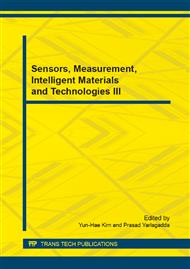p.225
p.229
p.233
p.238
p.242
p.247
p.251
p.256
p.260
Design of a Smart System for Treatment of Hemorrhagic Shock in Prehospital Settings
Abstract:
Hemorrhagic shock (HS) is a leading cause of death in both military and civilian settings. Fluid resuscitation is the most effective way for treating HS, but under and over resuscitation often occur due to the limited medical personal and experience. To improve the situation, we design a smart system and conduct animal experiments in order to verify whether the system is effective than traditional resuscitation method. A hemorrhage-resuscitation dog model is established and eighteen male mongrel dogs are randomly divided into three groups. The control group receives only intubation while the other two experimental groups receive resuscitation either with traditional method (TM) or with the smart resuscitation method (SRM). The results show that the SRM group maintains the target blood pressure for a longer time and has a compelling effect on reducing fluid needs compared with the TM group. The blood gas analysis also shows better in the SRM group. According to the experiments, the system conducts better results for prehospital treatment of HS, especially when medical supplies and expertise is limited or delayed. Therefore, it might play a role for battlefield and civilian occasions.
Info:
Periodical:
Pages:
242-246
Citation:
Online since:
March 2015
Authors:
Price:
Сopyright:
© 2015 Trans Tech Publications Ltd. All Rights Reserved
Share:
Citation:


